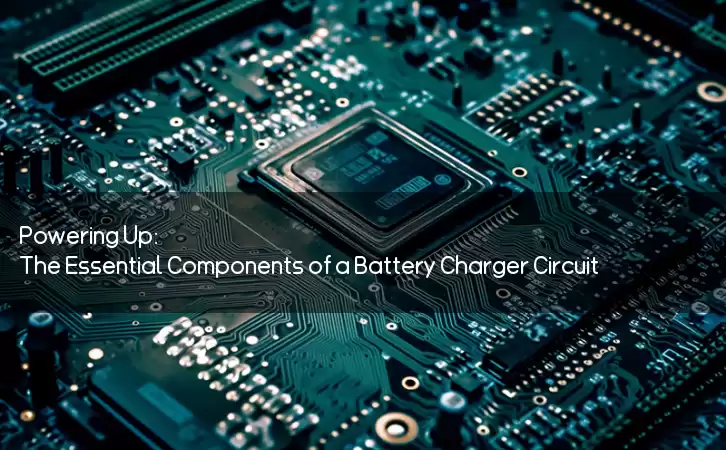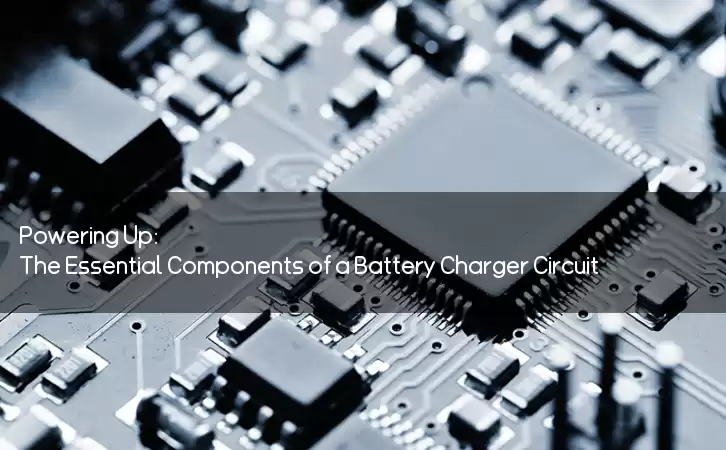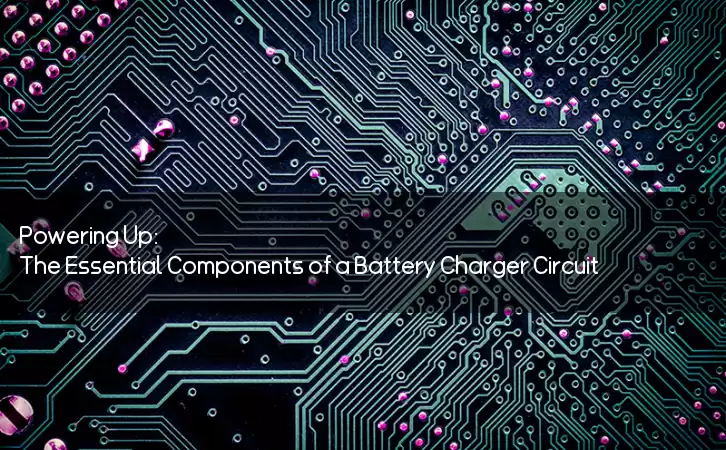Information Center
Powering Up: The Essential Components of a Battery Charger Circuit
Published:2023-07-24 00:33:16 Author:Green WCND Views:51Battery Charger Circuit: A Brief Understanding

In today’s digital era, batteries are ubiquitous. From mobile phones to electric cars, batteries have become a crucial part of our daily life. While they have revolutionized how we live and function, batteries require careful handling to keep them running efficiently. One of the most important aspects of battery management is charging. Battery chargers are essential for extending the life of batteries.

A battery charger is a device that supplies electrical energy into rechargeable batteries by forcing current through them when connected to a power source. The main function of the charger is to monitor the charging process, so the battery receives a charge without getting damaged. Different types of batteries require different charging techniques. Some of the most common battery types include lead-acid, lithium-ion, nickel-cadmium, and nickel-metal hydride.

The charger circuit mainly consists of a transformer, rectifier, filter, regulator, and protection circuitry. The transformer converts the AC voltage to a suitable level, while the rectifier converts the AC voltage to DC voltage. The filter circuit eliminates the unwanted AC ripple, and the regulator circuit maintains a fixed output voltage regardless of the input voltage or load changes. The protection circuit protects the battery and charger from damage.
Let’s look at each of these circuits in more detail.
Transformer: The transformer is the initial stage of the charger circuit. The input voltage ranges from 120V to 240V, and the transformer steps down this voltage level to a suitable level for charging the battery. The transformer has two coils, primary and secondary, that are wound around a magnetic core. When the AC voltage is applied to the primary coil, it produces a magnetic field that induces an electrical voltage in the secondary coil.
Rectifier: The rectifier converts the AC voltage to a DC voltage, which is necessary to charge the battery. The two main types of rectifiers are the half-wave rectifier and the full-wave rectifier. The half-wave rectifier converts only half of the AC wave into DC, whereas the full-wave rectifier converts the entire AC wave into DC.
Filter: The filter circuit removes the unwanted AC ripple from the DC voltage. It uses a capacitor to store the charge during the positive cycle and discharge it during the negative cycle. This way, it smoothens the DC voltage and makes it more constant and steady.
Regulator: The regulator circuit maintains a constant output voltage regardless of the input voltage or load changes. It can be either linear or switching. The linear regulator uses a transistor to regulate the voltage, whereas the switching regulator uses a pulse-width modulation (PWM) technique.
Protection: The protection circuit protects the battery and charger from damage. It consists of features like over-voltage protection, over-current protection, and short-circuit protection. The over-voltage protection prevents the voltage from exceeding a certain level, the over-current protection limits the current to a safe level, and the short-circuit protection prevents any abrupt disruptions.
Conclusion: A battery charger circuit is a vital component in extending the life of batteries, making them an essential part of our everyday life. Understanding the various stages in the charger circuit can help us in ensuring the proper operation of the batteries. With advanced technology, battery charging has become faster, safer, and more efficient than ever before. A well-designed charger can make our lives easier and ensure the longevity of our precious devices.
Power Adapter Design and Customization Guide for Portable Electric KettlesI. Common Design Types for Portable Electric Kettle Power AdaptersPortable electric ke···
I. Common Design Types of Power Adapters External Independent Type (Most Common) Design: A standalone adapter (e.g., "black brick") connected to the p···
Handheld Vacuum Cleaner Power Adapter Selection GuideIntroductionHandheld vacuum cleaners have become a mainstream tool for household cleaning due to their port···
Drill Power Adapter Selection Guide.drill-container { font-family: Arial, sans-serif; line-height: 1.6; max-width: 800px; margin: 0 auto; padding: 20px; } .dril···





